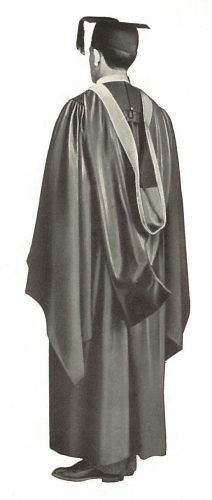Pace University
New York
1906




Detailed historical information about the royal blue and gold colors of Pace University is not available at this time.
The chevron was by far the most common heraldic division the Intercollegiate Bureau of Academic Costume (IBAC) employed to divide the two or three colors in an institution’s hood, but beginning in 1895 the “parti per chevron” was also used quite frequently. Here the two school colors were placed in the hood lining one above the other, with the division between them following the shape of a chevron. Later the IBAC began to use a per reversed chevron division and a division per bar on rare occasions. Confusingly, in IBAC lists from 1927 and 1948, a number of hoods were described as “[color] above [color]” or “[color] over [color]”, which referred either to a hood lining divided per chevron, per reversed chevron, or per bar, and today it is not usually known which of these three patterns the IBAC intended to describe.


Pace University did not appear in early IBAC documents from 1927 or 1948, so the Bureau might not have assigned the college a hood lining until the late 1940s or 1950s.
A list compiled by Kevin Sheard in Academic Heraldry in America (1962) described Pace’s hood lining as gold above royal blue, divided per bar. This was a duplication of the hood lining assigned to Western Theological Seminary in Michigan. Perhaps for this reason, an IBAC list from 1972 interchanged the colors in the hood lining, describing the pattern as “Yale blue over bright gold”. The IBAC often used “Yale blue” as a synonym for “dark blue”, which was fairly consistent with the university’s royal blue color.
As usual the Bureau did not specify the heraldic division between the two colors, but from Sheard we know that they were divided per bar.